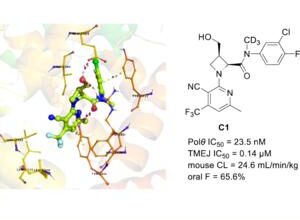Amazon and Walmart Use GenAI to Cut Vendor Costs

As Amazon and Walmart compete for retail dominance, the two industry giants are implementing generative artificial intelligence across the supply chain to cut costs and boost profits.
Amazon shared in a Monday (June 3) blog post how it is using AI at select sites to reduce returns through its “Project P.I.” model, named to suggest it works like a detective, scanning products for defects before they ship. The technology uses computer vision and generative AI to check factors such as product size and color while also looking into the root cause of the problems to preempt future defects. Amazon intends to expand the capability to more sites throughout the year.
“We want to get the experience right for customers every time they shop in our store,” Dharmesh Mehta, Amazon’s vice president of worldwide selling partner services, said in a statement. “By leveraging AI and product imaging within our operations facilities, we are able to efficiently detect potentially damaged products and address more of those issues before they ever reach a customer, which is a win for the customer, our selling partners and the environment.”
Meanwhile, Walmart is using AI at an even earlier step of the supply chain — negotiating with vendors. Earlier this spring, Bloomberg reported that the retail giant is using a chatbot from Pactum AI to automate vendor negotiations. Walmart feeds its budgetary constraints and information about its goals into the program, and then leaves the chatbot to work out the agreement.
“We set the requirements and then, at the end, it tells us the outcome,” Darren Carithers, the retailer’s senior vice president for international operations, told the news outlet, noting that the software has cut negotiation times down from weeks or months to days.
According to the PYMNTS Intelligence Whole Paycheck Report, which analyzes Amazon and Walmart’s market shares across different categories, Amazon holds a lead over Walmart. The latest edition, “New Consumer Spend Data Finds Amazon Way Ahead of Walmart,” revealed that Amazon captures 10% of total consumer retail spending, while Walmart accounts for 7.3%.
The moves to integrate AI aim to cut costs so that these sales will be more profitable. In the first quarter of the year, Amazon reported net income of $10.4 billion, and Walmart brought in $5.1 billion in profit. As Amazon and Walmart continue implementing generative AI across their supply chains, these technological advancements are poised to enhance operational efficiency and profitability.
According to findings highlighted in the PYMNTS Intelligence “Working Capital Tracker®,” 84% of business leaders said they believe generative AI will have a positive impact on their workforces.
“Large language models in general are extremely good at interacting with humans, gathering data, and making knowledge and data accessible,” Pecan CEO and Co-founder Zohar Bronfman told PYMNTS in March as part of the “AI Effect” series.
For all PYMNTS retail coverage, subscribe to the daily Retail Newsletter.



